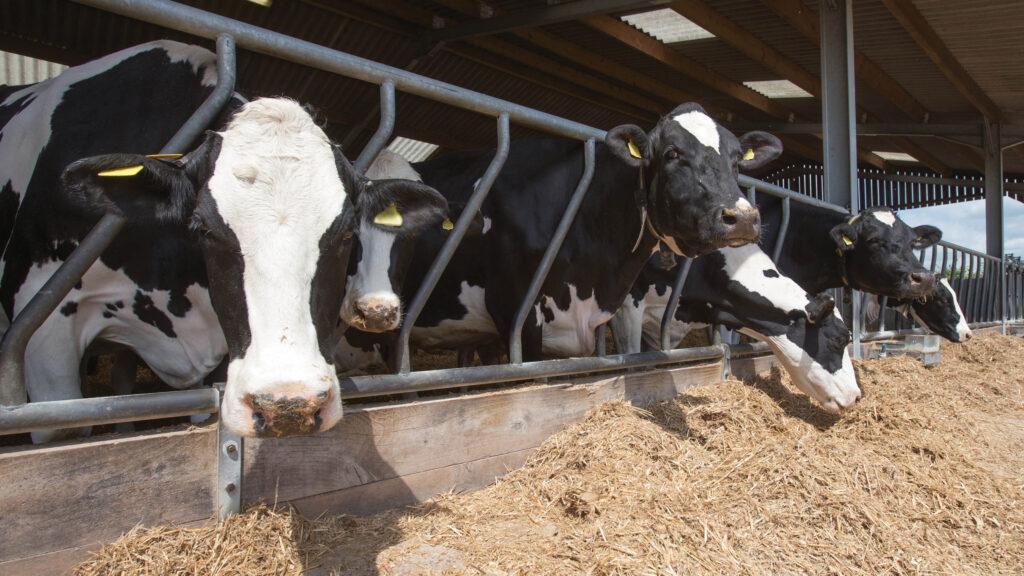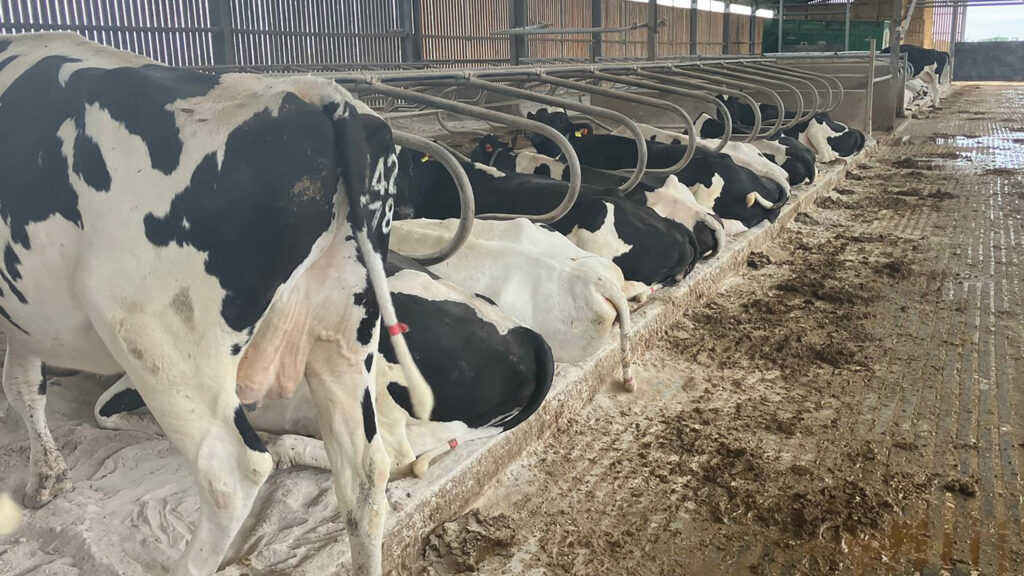Advice on dry cow shed management for high yielders
 © Tim Scrivener
© Tim Scrivener The high-yielding cow faces immense metabolic challenges.
Transition diseases such as milk fever, ketosis, and displaced abomasum cases remain costly threats, and poor fertility results in inefficiency.
The transition period of three weeks pre- and post-calving is the most critical stage.
Investment in dry cow housing and nutrition pays dividends in reduced disease, increased milk output and improved fertility.
See also: Advice for grazing high-yielding Holsteins
Space and environment
Stress is the enemy of transition success.
Research consistently shows that overstocking in dry cow sheds increases stress, reduces feed intake, and increases the risk of metabolic diseases (see “Key principles for a dry cow shed”).
One dairy client, who runs a 450-cow herd averaging about 12,000 litres a cow and 3.2kg milk solids a cow a day, has seen the benefits of reducing stress.
After extending the dry cow shed in 2023 and reducing stocking density and feed-fence pressure in the close-up group, Sills Farming, Ash Tree Farm, Derbyshire, has seen a notable reduction in transition problems.
For example, incidence of left displaced abomasum (LDA) has dropped from 7% in 2018 to 0.6% in the past 12 months, while yield has improved.

Dry cow facilities at Ash Tree Farm © Sills Farming
Nutrition and ration management
Nutrition is central to preparing the cow for lactation, with the key factors being calcium control and energy metabolism, as well as supporting the immune system.
To help manage energy balance in early lactation, optimising dry matter (DM) intake in the close-up dry cow is key to maximise rumen capacity, and thus DM intake when she calves.
The team at Ash Tree Farm aim for a score greater than 4 when assessing rumen fill in the group.
Regular push-ups and finely grinding straw for inclusion in the total mixed ration have helped unlock benefits including the reduction in LDA incidence.
Close-up cows are eating more than 15kg DM/day, including 8kg of chopped straw.
Because overconditioned and underconditioned cows are at higher risk of metabolic disease, body condition scoring (BCS) is carried out at dry-off, when moving into the close-up pen, and at point of calving.
The aim is for a BCS of 3.
To optimise liver function, rumen-protected choline is being fed to close-up cows.
Choline has been shown to optimise peak milk yield, reduce the incidence of metabolic disease in the transition period, increase colostrum quality and yield and have a permanent positive epigenetic effect on the foetus.
In addition, an increase in metabolisable protein in the close-up dry cow diet, using protected soya bean meal, has seen colostrum yields improve significantly.
In close-up dry cows, calcium control can be achieved by manipulating dietary cation-anion balance (DCAB) or by using a Zeolite binder.
Ash Tree Farm uses a bespoke DCAB mineral pack to complement forage mineral analysis. In the past 12 months, milk fever and incidence of retained foetal membranes has been 1.3% and 1.5% respectively.
Key principles for a dry cow shed
- Feed space of 85-100cm a cow, to ensure that all cows can eat at the same time
- Clean water access of at least 10cm linear trough space a cow
- 12-15sq m bedded lying area or at least one cubicle a cow, to ensure that transition cows do not have to compete for a space to lie down
- Minimise regrouping stress during the critical period of two to seven days before calving
- Good ventilation and dry lying areas to minimise heat stress and mastitis risk
